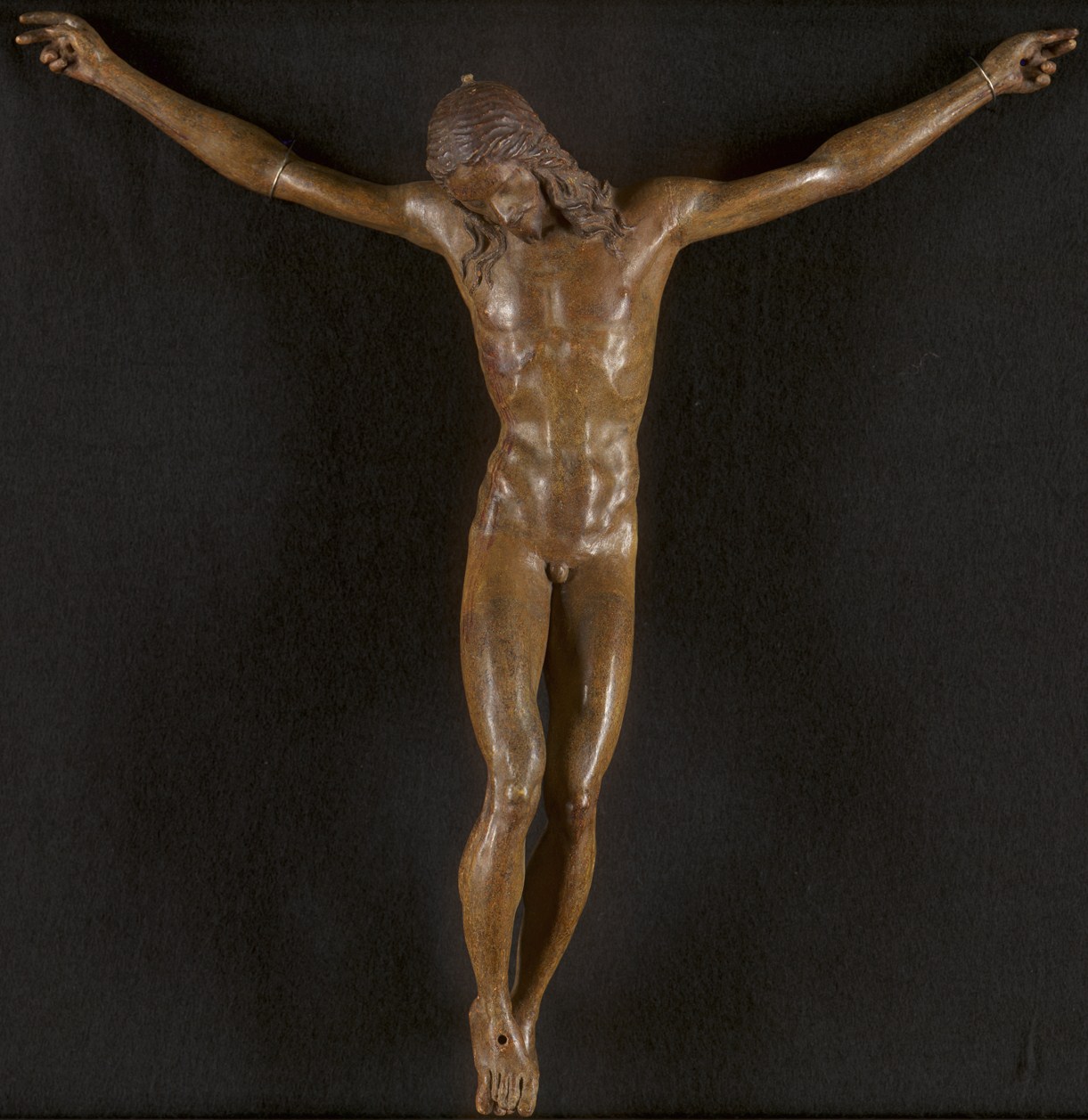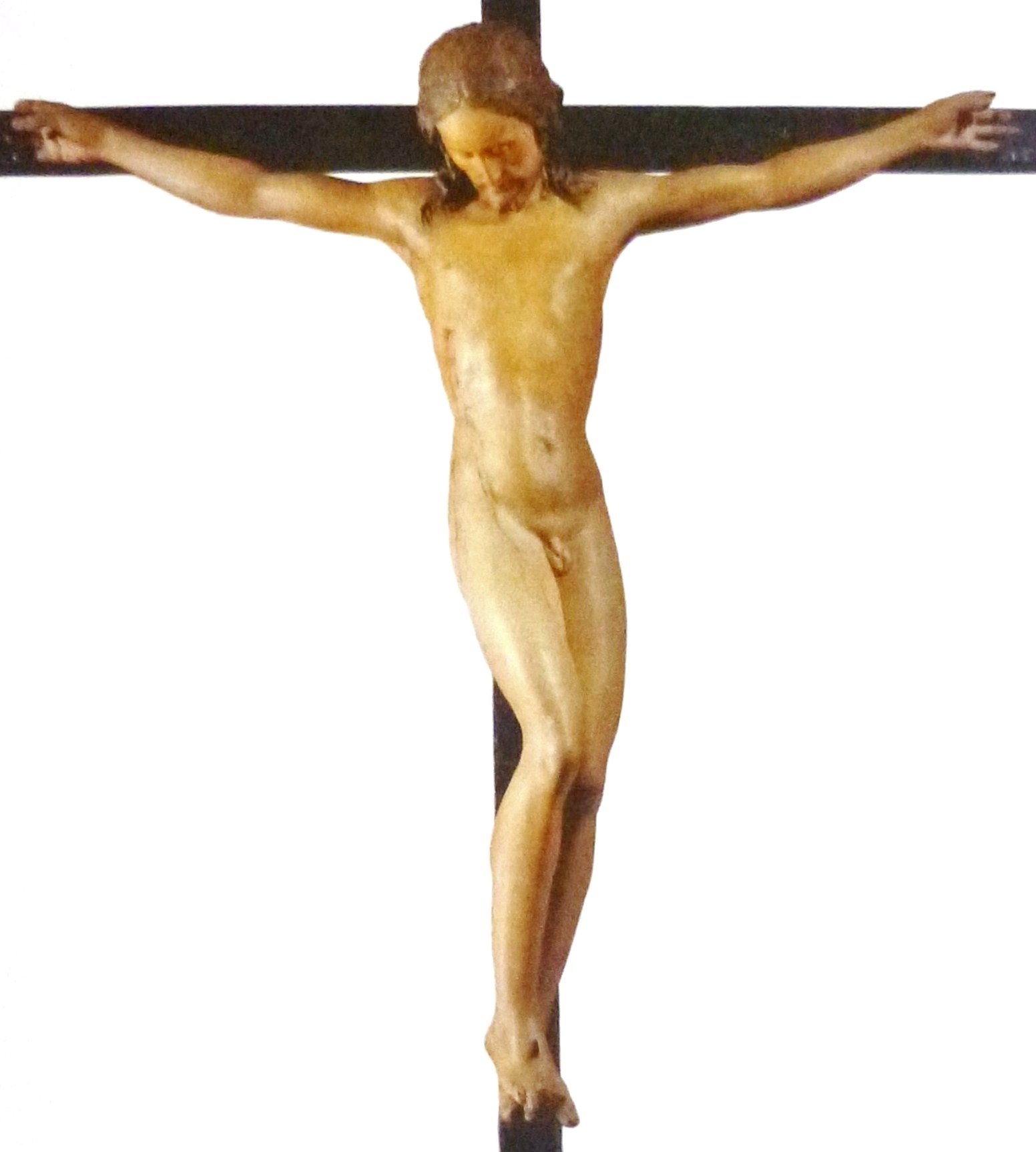One hot summer's day 30 years ago, Canadian-born art collector Peter Silverman was preparing to dive into Bavaria's scenic Starnberger. See, 15 miles southwest of Munich, when he received a breathless phone call from Gustl B., a local dealer with whom he "shared a passion for opera, good food and beautiful bodies."
Gustl had just been contacted by an impoverished nobleman desperate to sell his eclectic art collection, which included a "17th century South German crucifix."
"It's got your name on it!" barked Gustl. "Komm schnell!"
Silverman ripped off his snorkel and flippers, snapped on his water-skis and sped across the lake to investigate.
The crucifix was carved from a single piece of limewood (with arms added separately), and "as soon as I saw the work I felt that tingling -- that near skip of a heartbeat -- which I was beginning to trust," he recalls. He slipped the 16¾-inch crucifix into his waterproof pouch, handed Gustl a wad of 50 crisp 100-Deutschmark bills, and invited him back for a celebratory Weissbier and schnapps.
Silverman's Italo-American wife Kathy was initially bemused by the off-the-cuff purchase. "What is it about you Jewish boys and Christian art!?" she wondered. Christ, retorted Silverman "was, after all, one of our boys -- and, if anyone understood the nature of repudiation and suffering, we Jews are top of the list."
Joking apart, Silverman had no doubt he had just acquired a work of beguiling quality. "Great art is often synonymous with spiritual art," he believes. "The crucifix had a remarkably ethereal feel to it. It expressed all the higher ideals of pathos and spirituality I seek in exquisite art."


Peter Silverman and the limewood Crucifix he has donated to the Louvre
Fast-forward to June 2013. The Louvre has just accepted the crucifix as the Silvermans' gift. Not as Baroque Bavarian but as a late Quattrocento Florentine. How come? "The great quality of the carving, refined anatomical detail and knowledge of human musculature, and comparison with other works by the artist, suggest it could be a youthful work by Michelangelo."
Two particular crucifixes invite such comparison. The larger of them is 4ft 8in tall and hangs in Santo Spirito Abbey in Florence -- in whose hospital the youthful Michelangelo acquired his anatomical knowledge by dissecting corpses. It is commonly dated to 1493/4, when Michelangelo was in his late teens. Florence was under the sway of the hell-fire Dominican preacher Girolamo Savonarola, and personal crucifixes were in high demand -- and a source of useful income to aspiring sculptors. The crucifix was kept in dusty neglect in the Santo Spirito refectory for centuries, forgotten about until 1962. Today, despite a disconcerting resemblance to Pippa Middleton (I am talking about its face, not rear), Michelangelo's paternity is widely acknowledged.
The other crucifix is marginally smaller than Silverman's at 16¼in and, to some scholars, represents a dead rather than dying Christ. It was bought by the Italian State from the late Turin art dealer Giancarlo Gallino for €3.25m in 2008, with its attribution to Michelangelo endorsed by a posse of artworld heavies including Antonio Paolucci, Head of the Vatican Museums; Cristina Acidini, superintendant of Florence's state museums; and the venerable art historian Federico Zeri, who opined before his death in 1998 that "If it's not by Michelangelo, then it's by God." The crucifix was the subject of a 2004 exhibition at Florence's Museo Horne organized by Giancarlo Gentilini, a professor at Perugia University and leading expert on Renaissance Sculpture, whose lavish hard-back catalogue included a full-page photograph of Silverman's crucifix -- which Gentilini described as a slightly later, more elaborate version of the Gallino one.

The 'Gallino' Crucifix - The Santo Spirito Crucifix
If you think you've already heard the name Silverman in a Renaissance context, dead right: he also owns an exquisite portrait on vellum dubbed La Bella Principessa, ascribed to Leonardo da Vinci and identified as Bianca Sforza, the daughter of Leonardo's Milanese patron, Duke Ludovico Sforza.
Having his Bavarian crucifix regarded as a Michelangelo -- and valued at €25 million for insurance purposes by a leading auction firm -- was not, however, a situation Silverman and his wife found easy to handle. It was, he admits, "both a joy and a heavy responsibility. You might think that, thanks to La Bella Principessa, we've had plenty of practice, but you never really get used to being a custodian of a work of true genius. What you do with it, and what will become of it, are weighty questions that pound away, night and day."
Finally, in December 2011, they decided to offer the crucifix to the Louvre. They wanted to see it "properly protected and rightfully catalogued" -- and, by removing the work "from the vagaries and speculations of the art market," they hoped its attribution could be discussed "more dispassionately, without being colored by the perspective of personal enrichment."
Silverman -- who had already presented a Nepalese bronze to the Musée Guimet in Paris -- wrote to Henri Loyrette, head of the Louvre, offering to donate the crucifix to the museum with no strings attached. Loyrette expressed polite interest and outlined the forest of examinations required -- by the Louvre's specialist curators, Acquisitions Committee, Advisory Council and Research Laboratory -- before the Louvre could accept a work with such an ambitious attribution.
Jean-Luc Martinez, who replaced Loyrette as head of the Louvre earlier this year, has overseen the successful completion of this stringent procedure. Now he has announced that the crucifix will go on show in the Louvre's Michelangelo Gallery this fall, tagged as Florentine Artist c.1500 - Michelangelo?
Silverman is understandably delighted. "When a major museum is behind a work, it is perceived as genuine in the eyes of the world," he feels. "If a new discovery remains in private hands it can take a century to get to that point. I do not, unfortunately, have that time in front of me."
He is convinced that a "majority of scholars and connoisseurs will arrive at the same inevitable conclusion: no other artist but Michelangelo could have executed this extraordinary work."
Having his crucifix accepted by the Louvre does not, of course, mean Silverman can yet be fêted with certainty for pulling off one of the greatest one-twos in art history: rescuing both a Leonardo and a Michelangelo from anonymity.
But it sure does suggest he has one hell of an eye.

